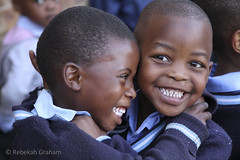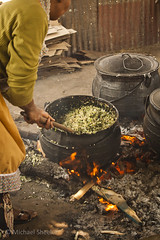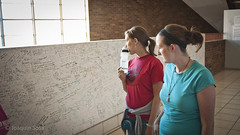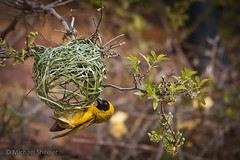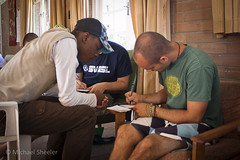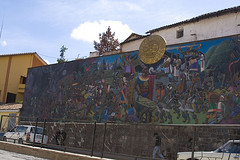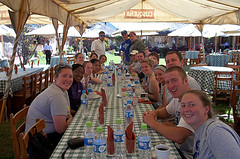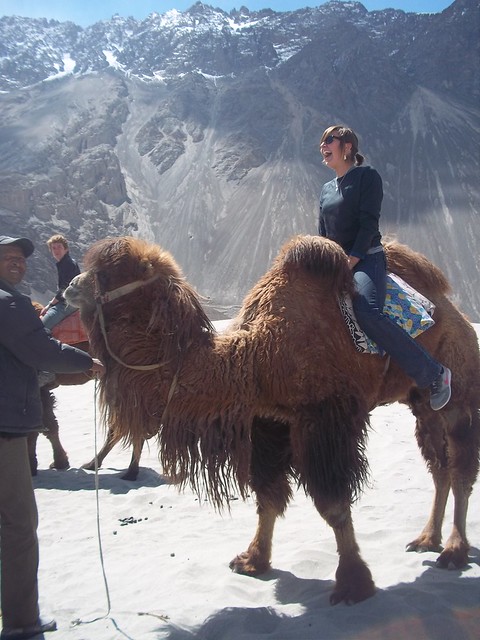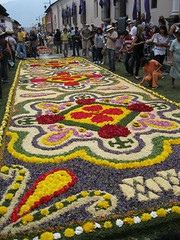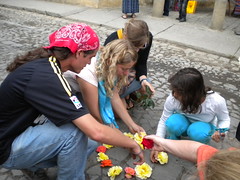October 10, 2011
Being an outdoor nature person, I enjoyed our time in Soweto, but was definitely looking forward to the mountains of Lesotho. And let me tell you, they do not disappoint. Since the day we arrived in Lesotho, a group of us had our eyes on Mt. Fuku Fuku, which we were told was the highest mountain in the immediate area. We bided our time patiently waiting for a full free day to climb. It finally came last Friday, and while others planned other hikes and activities, a group of five of us set out for Fuku Fuku in the morning.
In the village at the base of Fuku Fuku we were met by a small girl who knew two English phrases she would yell in a high pitched voice. One was “where you go,” and the other “sweets, sweets, sweets.” Using our little Sesotho, we answered both her questions telling her we didn’t have any sweets. However, since she didn’t know anything else to say, and it is a well known fact that all white people carry hiking bags filled with sweets, she just kept chanting. And so with smiles and waves we kept moving. We hiked the long ridge and after an arduous three hours, we made it to the top. We are proud to say we were only passed by one 6 year old boy and his mother, the only other people we saw on our ascent, and as to where they were going we are still not sure
The view was literally breath taking! Nothing but mountains and then valleys, with rift-like gorges separating all the small villages. We sat down with our long anticipated packed lunches as our reward for reaching the top. Far below we saw some Badisana (herd boys) with their sheep who started heading towards us upon their realization we are white. They reached us in about half the time we expected. As they came over the hill I started to recognize the isolation geographic boundaries can create.
For us hiking Fuku Fuku was a big ordeal. We gather up backpacks, hiking clothes, sun screen, cameras, food, water, and a first aid kit. All of which we feel we need before we can be prepared for the mountain. These herd boys on the other hand, in true Basotho fashion, leave early each morning herding their animals up the mountain with nothing but their boots, staff, and a blanket around their shoulders, such a different lifestyle, even though for a few weeks we are only separated by about 5 miles.
After a few pictures with the herd boys we started descending the mountain. As we were walking someone said, “This is awesome, we should have a worship service up here.” And I realized this is worship.
– David Jantzi
October 10, 2011
Lesotho, the Mountain Kingdom, is a place of beauty & grandeur and now a place that I can call home. I have experienced immense love and hospitality from the people here and am learning more each day.
My roommate, Anna Weaver, and I had the unique cultural experience of washing our clothes in the river with our host family. Initial uncertainty turned to delight as we saw the way our host mom and neighbor wash their clothes and take pride in the way they are able to remove any trace of dirt (seriously!). Basking in the sun on the rocks with the water flowing by and hearing the joyful sounds of children playing, our host moms chatting, and sheep bells ringing, I felt so peaceful and thankful that I am able to have this experience.
In Lesotho, I have found joy in teaching our host sisters songs, and then waking up to the sound of them singing those songs outside our window. I have found love in the actions and words of my host mother when she says, “Bana baka! Lehae!” – My children! You are home! I have found peace in the endless mountains, bright stars, and quiet moments. But most of all, I have found God in all of it – the “Dumela” as I walk down the road, the grin of a child, the majesty of the mountains – and I’ve realized more each day that His presence dwells deeply in the hearts of all people and the beauty of nature.
– Heidi Bauman
